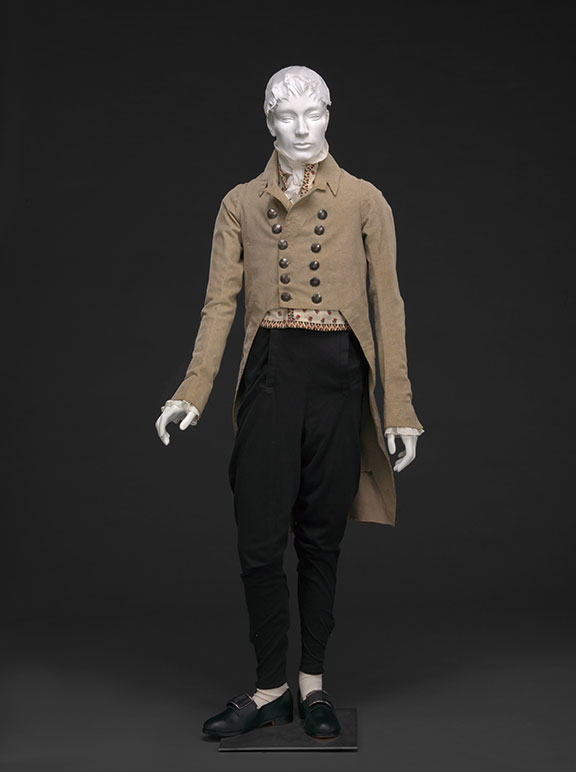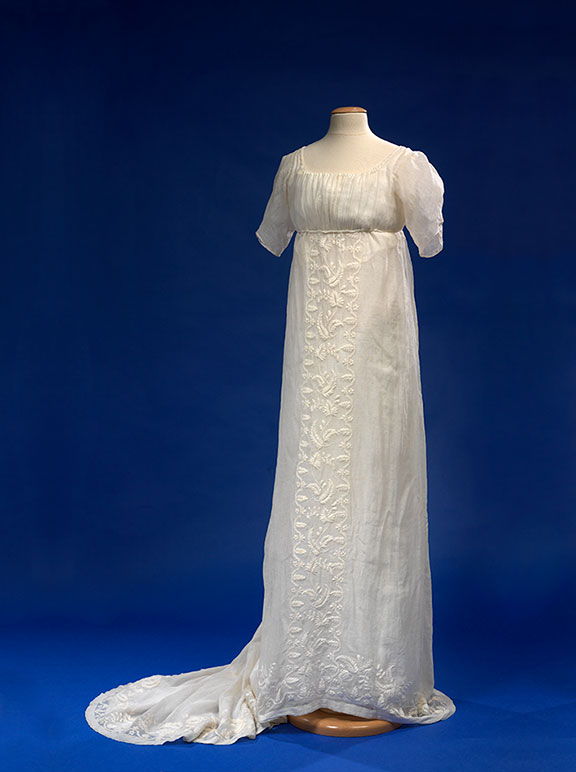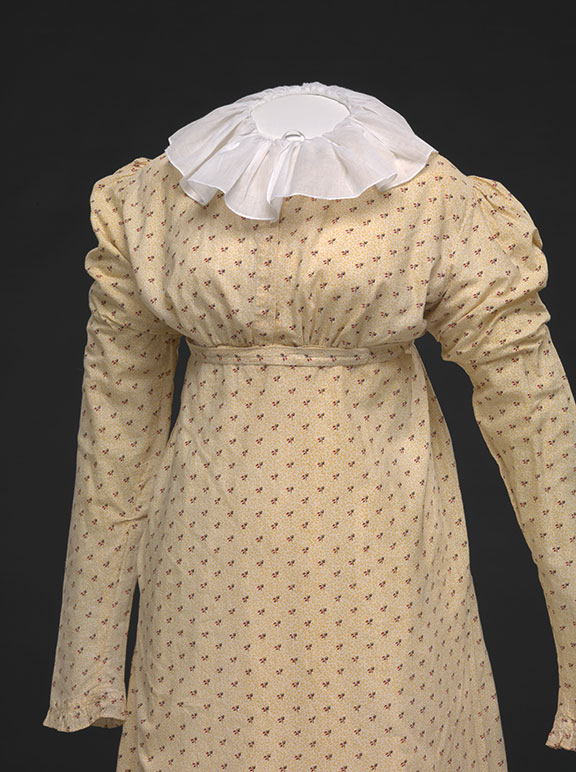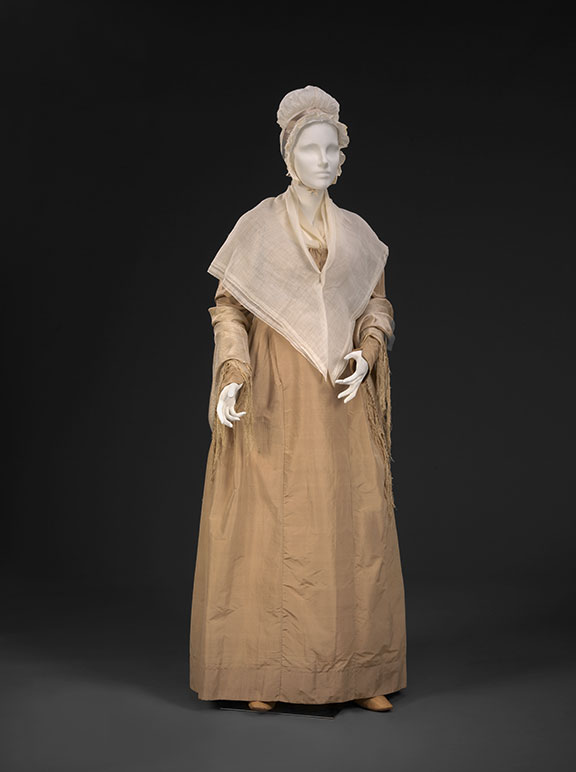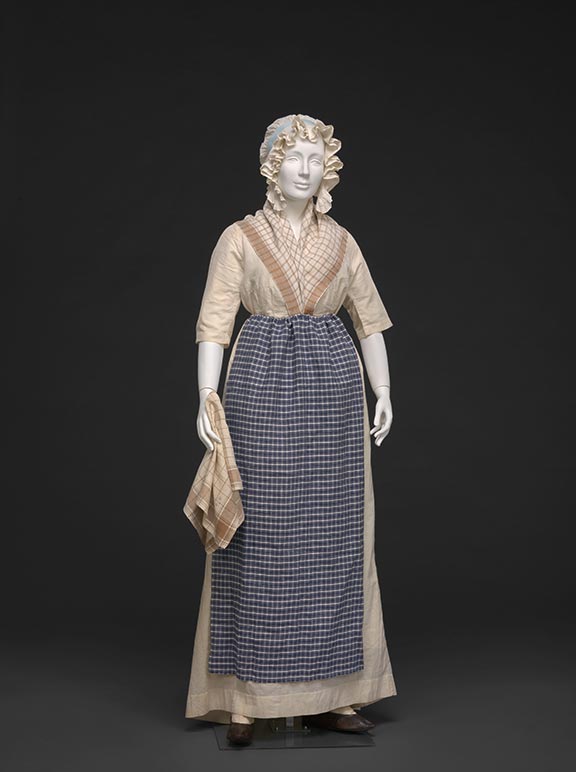Damask Dress
1720/About 1810
Style: The heavy silk is ill-suited to the softly draped styles of this time; it seems likely this dress was worn by an older woman who preferred not to adopt the extremes of the youthful, body revealing styles.
Older ladies with large kerchiefs at the neck and caps (no longer worn by younger women as they were in the 1700s) can be seen in many portraits of the time, modifying current styles to suit their taste and ideas of propriety.
Fabric: Altering and complete remaking of dresses was common, but this example is somewhat extreme: a silk damask of the early 1700s was remade about 1810 into a high-waisted, albeit somewhat conservative dress. The silk was un-stitched and remade probably several times over a hundred years before it was made into the dress pictured here. These silks were very costly, and both American and European women saved and remade them again and again.
Dress, 2528, gift of Emily B. Ames; embroidered cotton mull kerchief, early nineteenth century, 79.38.6, DAR Museum; Cotton cap, late eighteenth century, possibly owned by Janneke Phoenix Krum, 1203, gift of Ellen Wallis; Spectacles, early nineteenth century, 71.192, gift of Hazel Patten Myers in memory of Leslie W. Myers.



